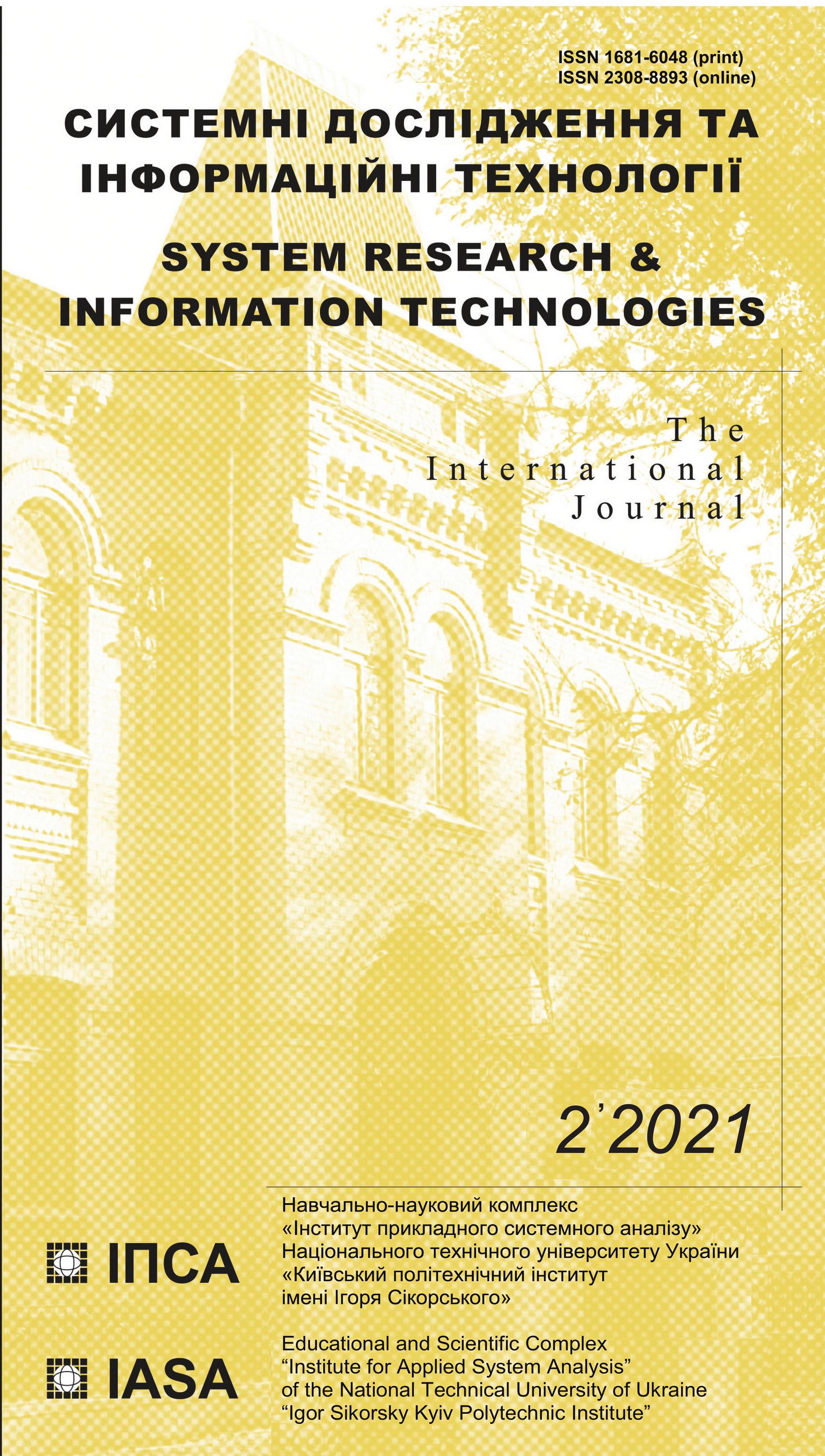Cluster analysis for multidimensional objects in fuzzy data conditions
DOI:
https://doi.org/10.20535/SRIT.2308-8893.2021.2.02Keywords:
cluster analysis, multidimensional membership functions, centroids of fuzzy-sets of objects and clusters, centers of gravity and mid-sections of fuzzy sets, optimality criteria and clustering algorithmsAbstract
This article presents many different areas of practical applications of multivariate cluster analysis under conditions of fuzzy initial data that are described in the literature. New algorithms and formula expressions are proposed for combining various multi-dimensional objects, the parameters of which are given by fuzzy-sets, into clusters along with calculating the coordinates of the centroids of their membership functions. Various types of clustering criteria are formulated in the form of minimizing the weighted average and the sum of distances between the centroids of objects and clusters presented in different metrics, as well as maximizing the distances between the centroids of different clusters. The formulations and mathematical models of three different NP-hard problems of multidimensional clustering in fuzzy-data conditions are proposed; while solving them any of the considered optimality criteria can be used. Heuristic algorithms for the approximate solution of two formulated problems have been developed. The algorithm for solving the 1st problem is illustrated with a numerical example. The obtained results can serve as a direction for further research and have wide practical applications.
References
J. Bacher, A. Pöge, K.Wenzig, Clusteranalyse – Anwendungsorientierte Einführung in Klassifikationsverfahren. 3. Auflage. Oldenbourg, München, 2010, 538 s.
S.A. Ajvazjan, V.M. Buchshtaber, I.S. Enyukov, and L.D. Meshalkin, Applied Statistics: Classification and Dimension Reduction. Moscow: Finansi & Statistika, 1989, 607 p.
I.D. Mandel, Cluster Analysis. Moscow: Finansi & Statistika, 1988, 176 p.
M.Zhambyu, Hierarchical Cluster Analysis and Compliance. Moscow: Finansi & Statistika, 1988, 345 p.
Yu.A. Zack, Making decisions in the face of blurry and fuzzy data. Moscow: URSS, 2013, 352 p.
Yu.A. Zack, Making effective decisions in economics and management in the presence of non-numerical information and blurry data. Moscow: Ekonomika, 2018, 245 p.
D.A. Vyatchenin, Fuzzy automatic classification methods. Minsk: Technoprint, 2004, 219 p.
D.A. Vyatchenin, “The use of fuzzy numbers to substantiate clusters in fuzzy clustering methods”, Iskusstvenij intellect, no. 3, pp. 523–533, 2008.
Yu.P. Zaychenko and M.A. Gonchar, “Fuzzy methods of cluster analysis in problems of automatic classification in economics”, Bulletin of the National Technical University of Ukraine “KPI ”. Informatics, control and computer engineering, vol. 47, pp. 198–206, 2007.
N.A. Grudinina, E.S. Ivanova, A.V. Sibiryakov, N.V. Maüjnjshina, N.B. Rostova, R.A. Fajsrachmanov, “The use of cluster analysis in the development of approaches to the selection and prescription of treatment regimens for HIV-infected patients”, Bulletin of Siberian Medicine, no. 16 (3), pp. 52–60, 2017.
F. Höppner, F. Klawonn, R. Kruse, and T. Runkler, Fuzzy Cluster Analysis: Methods for Classification, Data Analysis and Image Recognition. Chichester: Wiley Intersciences,1999, 289 p.
J.C. Bezdek, J.M. Keller, R. Krishnapuram, and N.R. Pal, Fuzzy Models and Algorithms for Pattern Recognition and Image Processing. New York: Springer Science, 2005, 776 p.
V.S. Zabolotnikova and O.N. Romashkova, “Analysis of clustering methods for effective management of tax service processes”, Fundamental Research, no. 9, pp. 303–330, 2017.
E. El-Khamy, R.A. Sadek, M.A. El-Khoreby, “An efficient brain mass detection with adaptive clustered based fuzzy C-mean and thresholding”, IEEE International Conference on Signal and Image Processing Applications, pp. 429–433, 2015.
T. Banerjee, “Day or Night Activity Recognition From Video Using Fuzzy Clustering Techniques”, IEEE Transactions on Fuzzy Systems, 22 (3), pp. 483–493, 2014.
S. Sridevi and S. Nirmala, “ANFIS based decision support system for prenatal detection of Truncus Arteriosus congenital heart defect”, Applied Soft Computing, no. 46, pp. 577–587, 2016.
M.A.M. Abushariah, A.A.M. Alqudah, O.Y. Adwan, and R.M.M. Yousef, “Automatic Heart Disease Diagnosis System Based on Artificial Neural Network (ANN) and Adaptive Neuro-Fuzzy Inference Systems (ANFIS) Approaches”, Journal of Software Engineering and Applications, no. 07(12), pp. 1055–1064, 2014.
S. Sridevi and S. Nirmala, “ANFIS based decision support system for prenatal detection of Truncus Arteriosus congenital heart defect”, Applied Soft Computing, 46, pp. 577–587, 2016.
N.A. Korenovsky, “The use of fuzzy decision-making logic for medical expert systems”, Medical equipment, no. 1, pp. 33–35, 2015.

